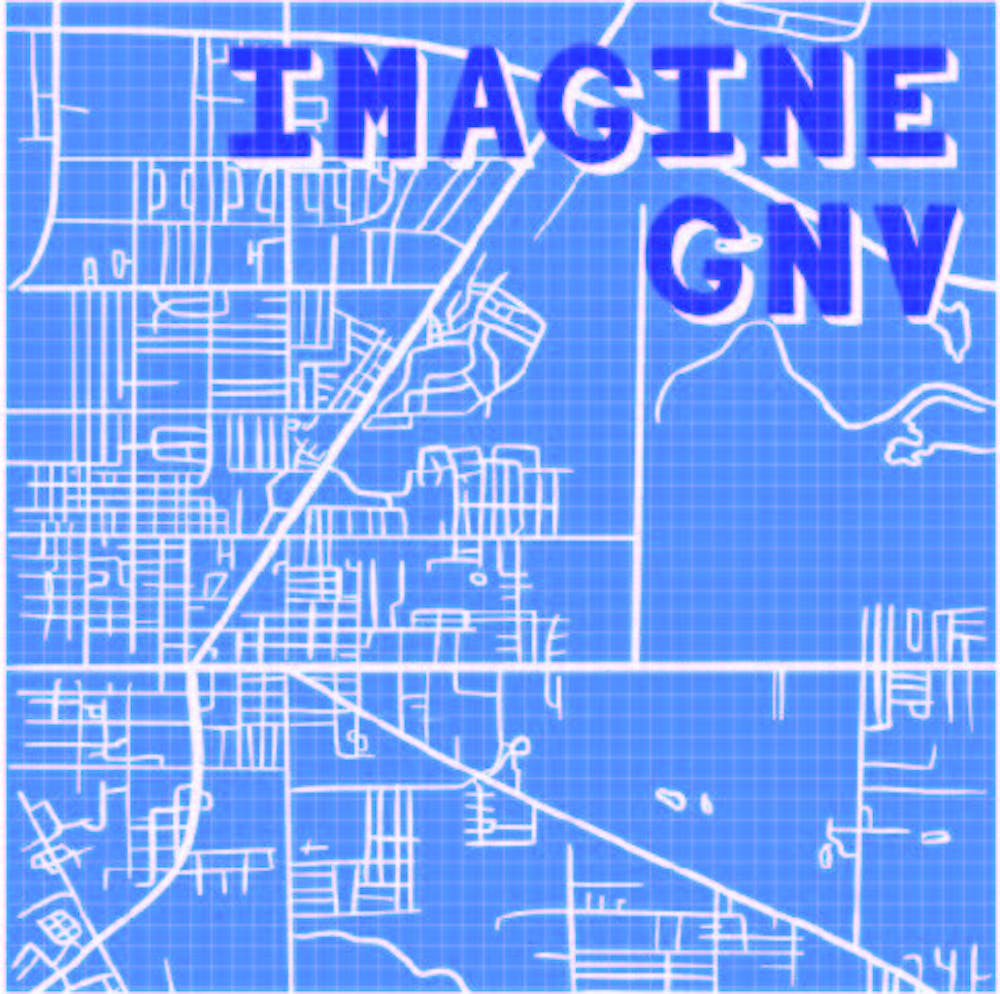Tina Days, a 43-year-old East Gainesville resident, has seen generations of people leave Gainesville because of the lack of resources on the East side of town. She hopes the city’s new proposal will change that trend for her and her family.
“It’s long overdue …we’ve lost generations of people that’s already gone and decided that they’re going to leave because of the lack of resources, housing all over the east side,” she said.
A plan is in the works to help bridge the economic gaps between neighborhoods throughout the city.
Currently in planning, Imagine GNV is a proposal the Gainesville City Commission will present in October. It is a state-mandated plan meant to reinvent the city over the next 10 years. The plan aims to guide the city on how it spends public funds and determine guidelines for residential areas, schools, cultural centers and infrastructure.
The first four drafts were made available on Aug. 25, and it highlights policies that aim to overcome racial disparities, especially the predominantly Black and lower-income neighborhoods of East Gainesville. The city is welcoming community feedback via survey, email and community meetings.
Days is excited for the educational changes in the comprehensive plan for her two daughters and 5-month-old baby. In fact, she’d like to see them made as soon as possible.
“I don’t even know when the last elementary school has been built on the east side,” Days said. “I don’t understand why the development needs to take 10 years. If you go over to the west side, it seems like new construction, new housing, new stores happen overnight.”
City Commissioner David Arreola is hopeful the plans will set the tone for the goals of the commission over the next decade.
“The reason why we’ve chosen to go with ‘Imagine GNV’ as our brand for this process is because we’ve committed ourselves to become the first city in America that puts equity as the main centerpiece of our comprehensive plan,” Arreola said.
The first chapter of the plan is titled Gainesville Today, which serves as an introduction to Imagine GNV. The chapter introduces Erica, a 36-year-old mother of two and teaching assistant who struggles with housing issues, transportation and community resources. As the plan goes on, Erica is shown enjoying the benefits of the plan and how a reimagined Gainesville helps her deal with day-to-day issues.
In the second chapter, How We Learn, the future of public education is explored. The chapter addresses the inequity and achievement gap in Gainesville’s current public school system, and it vows to redraw school district zones and expand higher quality education to low-income students.
Our Cultural Identity, the third chapter, will guide the city in its preservation of the history and culture. The chapter also shares upcoming plans to expand the City’s arts and cultural programs, such as starting weekly workshops in neighborhood centers and collaborating with UF and Santa Fe’s arts programs.
The last chapter that was published, How We Get Around, plans on continuing the expansion of convenient public transportation that betters the environment and the community. The chapter also discusses implementing the Gainesville Vision Zero Framework to eliminate deaths and injuries caused by traffic accidents.
The next chapters waiting to be published will be Where We Live, How We Work, Our Environment, Our Health and Wellbeing and Our Democracy.
Arreola said the city is trying to estimate the impact of development and land use on people living in those areas. He said he is looking forward to seeing the housing plan in action. While he said the problem is national, there are local solutions the city can be working on to help alleviate the housing crisis.
“The perspective we're taking now and we're asking people in the city to engage with is to consider who is being affected,” Arreola said. “Consider the neighborhoods and don't just consider [what’s inside] their pocketbook, consider who they are. What is the family of their neighborhood? What is the history of their neighborhood?”
City Commissioner Reina Saco said public input on this comprehensive plan is vital to its success.
“Us seven, and even our staff, can have great ideas and can read all the studies on how other cities like ours are different and are moving forward, but those things might not work here,” Saco said. “We want the meat on the bones to come from the community.”
While the goals outlined in the plan are ambitious, Saco believes any progress is still progress.
“You don't necessarily have to get to 100% at each of these, because it might not be possible …but so long as we are working towards it and not regressing, I see that as success,” she said.
Contact Jiselle Lee at jlee@alligator.org or follow her on Twitter @jiselle_lee.
Jiselle Lee was The Alligator’s Summer 2023 Editor-In-Chief. She was previously a reporter with NextShark News and a reporting intern at The Bradenton Herald.






